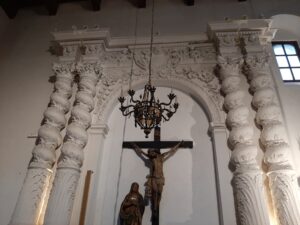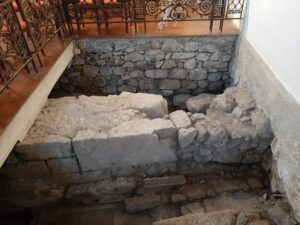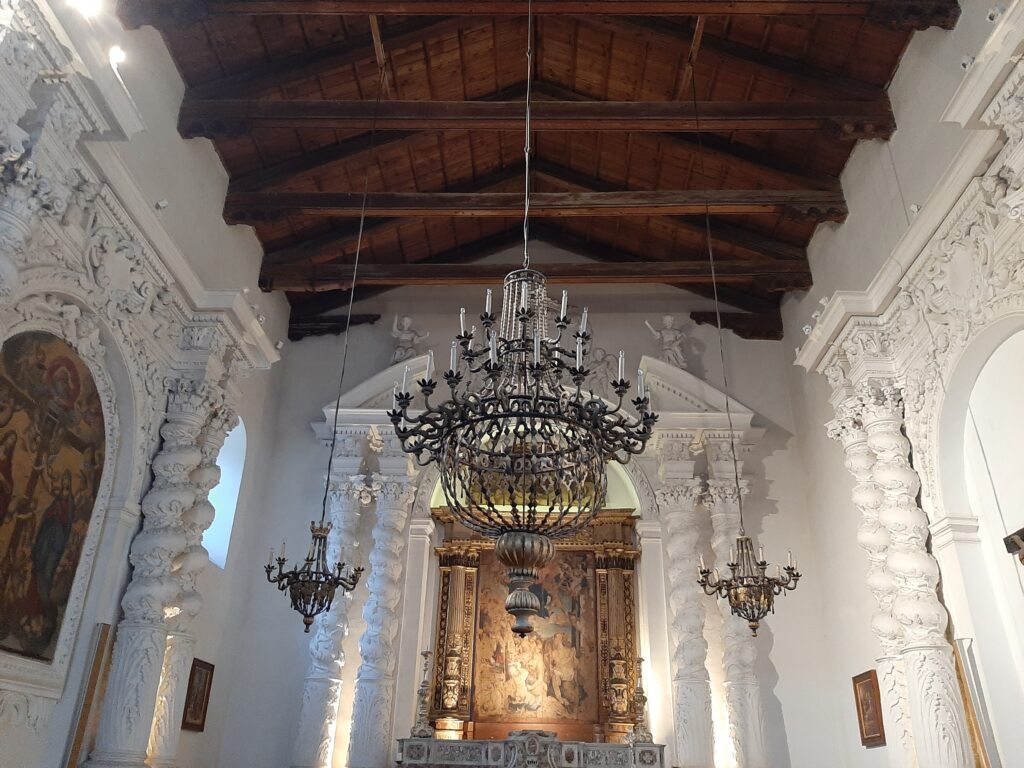Taormina Blog
The Church of Saint Catherine of Alexandria:
The Church of Saint Catherine of Alexandria: A Baroque Gem in the Heart of Taormina
In the vibrant heart of Taormina, along the famous Corso Umberto, stands the graceful and imposing Church of Saint Catherine of Alexandria. This sacred building, nestled among the architectural wonders of the city, tells a fascinating story that intertwines faith, art, and memory.
 Origins and Foundation
Origins and Foundation
The current church was built in the first half of the 17th century, specifically after 1610, when the Capuchin Friars purchased the old Church of Saint Catherine located outside the city walls. The new building was erected atop the ruins of a Roman Odeon, which itself rested on an ancient Greek temple, likely dedicated to Aphrodite. This layering of eras and cultures makes the church a true historical palimpsest.
Architecture and Style
Baroque style dominates the structure, with an elegant façade made of Taormina’s pink marble. The central portal is framed by Ionic columns and Corinthian capitals, and above it sits a niche housing the statue of the patron saint, sculpted in 1705 by Paolo Greco. The presence of cherubs, volutes, and shell decorations gives the church an aura of refined spirituality.
A small bell tower rises on the left side of the façade, discreet yet harmonious, while the sacristy—likely dating back to the 16th century—features marine motifs that recall the cult of Venus.
Interior and Works of Art
The interior consists of a single nave with a wooden truss ceiling. The main altar, made of polychrome marble and inlaid wood, is a Baroque masterpiece that hosts the painting of the Martyrdom of Saint Catherine, attributed to Jacopo Vignerio. On either side, two smaller altars adorned with twisted columns and praising cherubs complete the visual harmony.
Among the preserved artworks, a marble statue of the saint dated 1493 stands out, originating from the original church. The figure, stocky yet intense, depicts Saint Catherine holding the palm of martyrdom and an open book—symbols of her wisdom and noble status.
 Restoration and Discoveries
Restoration and Discoveries
After a long period of closure, the church was restored and reopened for worship in 1977. During the works, Greco-Roman remains, a crypt, and an ossuary were uncovered—now visible through a wrought iron railing. These discoveries have further enriched the historical and cultural value of the site.
A Place of Faith and Beauty
The Church of Saint Catherine of Alexandria is not just a monument, but a living symbol of Taormina’s spirituality. Every detail—from the carved stone to the light filtering through crystal chandeliers—tells a story of devotion, art, and identity.
Visiting this church means diving into centuries of history, breathing in the soul of Taormina, and being enchanted by a beauty that transcends time.
Curiosities, Legends and Religious Events
🕊️ The Feast of Saint Catherine Every year on November 25th, the community of Taormina faithfully celebrates the feast day of Saint Catherine of Alexandria. The church comes alive with hymns, solemn Masses, and moments of reflection that unite worshippers and visitors alike. Rose petals often adorn the altar, and processions wind through the historic streets, accompanied by traditional music and fragrant incense.
 📜 The Legend of the Vanishing Ring It is said that long ago, a noblewoman from Taormina donated a precious gold ring to the statue of the saint as a vow for a received grace. However, the ring mysteriously disappeared within days. Some claim it was stolen, while others speak of a miracle: the saint herself may have taken back the gift as a sign of protection. The legend continues to intrigue visitors to this day.
📜 The Legend of the Vanishing Ring It is said that long ago, a noblewoman from Taormina donated a precious gold ring to the statue of the saint as a vow for a received grace. However, the ring mysteriously disappeared within days. Some claim it was stolen, while others speak of a miracle: the saint herself may have taken back the gift as a sign of protection. The legend continues to intrigue visitors to this day.
🪦 The Hidden Ossuary Beneath the Church During 20th-century restorations, a hidden ossuary was discovered beneath the nave. According to some theories, it was used over the centuries as a burial site for friars or clergy. This underground space, now visible through a railing, adds a mysterious and evocative touch to the visit.
🌿 A Spiritual Refuge, Even for Artists The tranquility and beauty of the Church of Saint Catherine have inspired not only the faithful but also artists and writers. Local poets describe the golden light filtering through the columns as a divine caress, while painters capture its façade in delicate watercolors.

